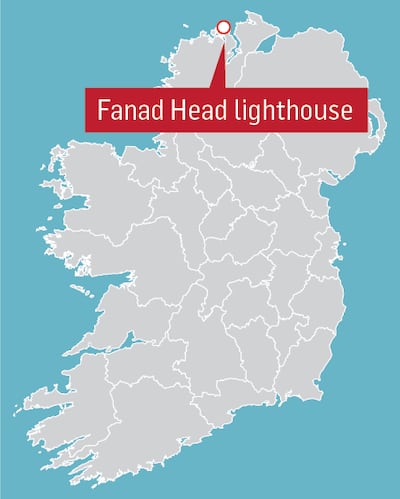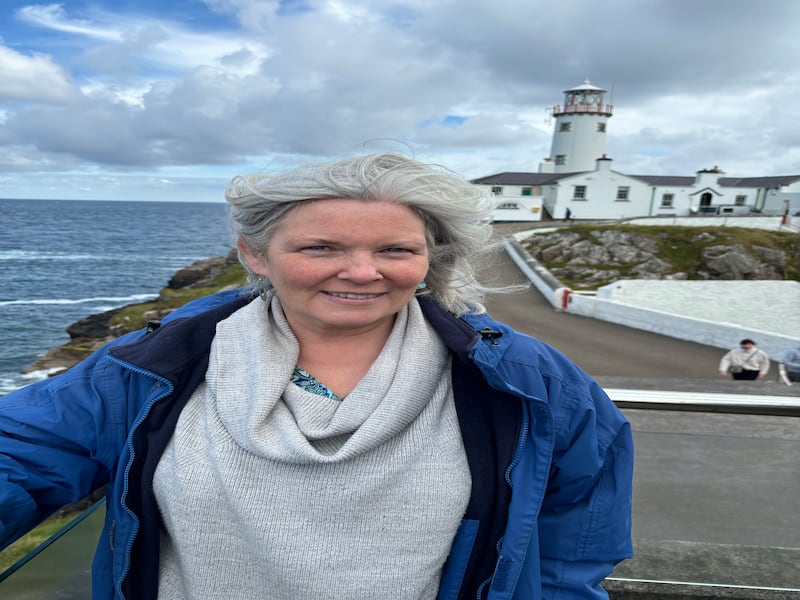For centuries, Ireland’s lighthouses have stood strong against raging storms, offering a beacon of hope for sea travellers and carrying a strange fascination for those on land. In a new series, The Irish Times visited some of Ireland’s most notable lighthouses, including Blacksod, Fanad, Ballycotton, Hook, and Wicklow Head, to learn about their fascinating histories and how their roles have changed in the modern era.
In his beguiling study of lighthouse people a half-century ago, British writer Tony Parker told of a retired keeper living on a remote island clifftop for an uninterrupted view of his old lighthouse on the horizon far away.

“Why would I have a house built for myself in this exact spot here, if it wasn’t so I could look out of my window and see her every morning, and her light every evening, and be satisfied however hard the wind blows and the sea rages she’s still there?” he wrote.
This is in mind as I meet Éamonn McAteer, the final attendant of the Fanad Head lighthouse on the rugged northern shores of Co Donegal. McAteer, now retired, is one of the last of his kind — all Irish lighthouses are fully automated these days. For 80 years he has lived overlooking the Fanad beam that first lit up the Atlantic coast on St Patrick’s Day in 1817.
RM Block
“I’ve been by the lighthouse all my life, four different lights,” he says.
“The old light was a revolving light. Then they changed it over to a stationary flashing light, which we didn’t like at all ... I would hear my parents talking about it in their lifetime, changes they would have seen as well, going back for generations.”
Lighthouses convey more than light. For those in thrall to their romance, they are elemental symbols of wonder and refuge. For mariners, they protect. They are icons of a past era and evoke constancy in today’s uncertain times. Yet still we remain vulnerable to the incessant rumblings of storm and tide.
“You have to respect the sea,” says McAteer, recalling weather talk by CB radio with lightkeepers in Skerryvore and Barra Head in Scotland.
“If you get bad weather along the coast, you’ll get three waves, or four will come in succession. Then there’s a lull and that will continue on, and continue on. That’s if you have heavy seas.”

The majestic Fanad tower stands tall at the tip of an isolated headland between Lough Swilly and Mulroy Bay. On a clear night, the light is visible at sea for 18 nautical miles. For mournful emigrants on ships leaving Derry, this was the last sight of Ireland on the long, seasick voyage to America.
Thanks to technical wizardry the beam turns red over treacherous Swilly rocks, the scene of disaster in 1812 when hundreds of sailors died in a Royal Navy frigate named the Saldanha. That wreck led to the first Fanad lighthouse being built, on land acquired from Lord Leitrim. The current tower, rising 22m from the ground and 39m from the sea below, opened in 1886.
Fanad remains a working lighthouse, one of 11 in Co Donegal, the navigation apparatus under the control of the Commissioners of Irish Lights. Eight years ago the tower opened as a tourist attraction. Forbairt Fhánada, a community company, provides daily tours and accommodation in three houses formerly occupied by lightkeepers and their families. Some 60,000 people came in 2023.
“There was no tourism in Fanad before this,” says Eimear Ní Mhathúna, manager of the tourist centre, noting it employs 29 local people in a job-starved Gaeltacht region. “People here say Donegal is the forgotten county but in Donegal, this is the forgotten area.”

Visitors use 3D goggles to watch the virtual-reality animation of the Saldanha sinking. The Amharc platform is a viewing point for seabirds and sea life, with dolphins and basking sharks being occasional visitors. The Éist audio room offers reflection, with gentle recordings of local music and actors reading lighthouse history: “More a way of life than a job, it was handed down.”
Before a lifetime working at the tower, McAteer went to school with lightkeepers’ children.
“You imagine now on a cold stormy morning and it raining, the families having to leave here and walk over to school,” he says.
“The problem there was you would get acquainted with the families going to school but then they’d be after two years transferred, so you would miss the company.”
He tells of tragedy and danger. Four local fishermen were lost in 1956, bringing the first rescue helicopter to Fanad: “Someone discovered the boat and the nets ashore in the morning.”
Another time, he and friends waded through water “up to our midriff” to save a tourist who fell from the cliff, hoisting him on to “a big old oak door”. The doctor couldn’t reach the water so a boy gave the painkiller: “I can still see him to this day getting the vein in the arm and getting the syringe in.”
We climb 59 spiral granite steps and 17 ladder steps to the top of the tower. Here the views are panoramic — Tory Island brooding out west, Irishtrahull to the east — and Malin Head, the most northerly point in Ireland and the windiest. The ocean today is calm.
- Sign up for push alerts and have the best news, analysis and comment delivered directly to your phone
- Join The Irish Times on WhatsApp and stay up to date
- Listen to our Inside Politics podcast for the best political chat and analysis



















